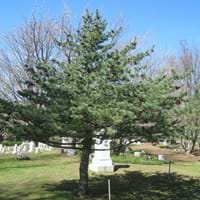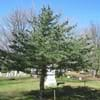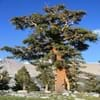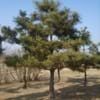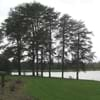Life Span
Perennial
Perennial
Type
Needled or Scaled Evergreen
Perennial
Origin
Japan
Eastern Europe
Types
Not Available
Not Available
Number of Varieties
Not Available
Habitat
low mountains, Mountain Slopes, Mountain tops, Mountains
Terrestrial
USDA Hardiness Zone
6-9
4-9
Sunset Zone
2a, 2b, 3a, 3b, 4, 5, 6, 7, 8, 9, 14, 15, 16, 17, 18, 19, 20, 21, 22, 23, 24
1a, 1b, 2a, 2b, 3a, 3b, 4, 5, 6, 7, 8, 9, 10, 11, 12, 13, 14, 15, 16, 17, 18, 19, 20, 21, 22, 23, 24
Habit
Spreading
Clump-Forming
Flower Color
Non Flowering Plant
Yellow, Lavender, Blue Violet
Flower Color Modifier
Bicolor
Bicolor
Fruit Color
Brown, Tan
Not Available
Leaf Color in Spring
Green, Blue Green
Green, Sea Green
Leaf Color in Summer
Green, Blue Green
Green, Sea Green
Leaf Color in Fall
Green, Blue Green
Green, Sea Green
Leaf Color in Winter
Green, Blue Green
Light Green
Leaf Shape
Subulate
Lanceolate
Plant Season
Spring, Summer, Fall, Winter
Spring, Summer
Sunlight
Full Sun, Partial Sun
Full Sun, Partial Sun
Growth Rate
Medium
Medium
Type of Soil
Loam, Sand
Loam, Sand
The pH of Soil
Acidic, Neutral
Neutral
Soil Drainage
Well drained
Well drained
Bloom Time
Fall, Spring, Summer
Spring, Late Spring, Early Summer
Tolerances
Drought
Drought
Where to Plant?
Ground
Ground
How to Plant?
Seedlings
By dividing rhizomes, tubers, Seedlings
Plant Maintenance
Medium
Medium
Watering Requirements
Do not water frequently, Needs less watering
Average Water Needs, Do Not over Water
In Summer
Lots of watering
Lots of watering
In Spring
Moderate
Moderate
In Winter
Average Water
Average Water
Soil pH
Acidic, Neutral
Neutral
Soil Type
Loam, Sand
Loam, Sand
Soil Drainage Capacity
Well drained
Well drained
Sun Exposure
Full Sun, Partial Sun
Full Sun, Partial Sun
Pruning
Remove damaged leaves, Remove dead branches, Remove dead leaves
Remove damaged leaves, Remove dead branches, Remove dead leaves
Fertilizers
All-Purpose Liquid Fertilizer, Apply N-P-K
All-Purpose Liquid Fertilizer
Pests and Diseases
Blight, Mealybugs, Red blotch, Sawfly Larvae, Scale insects
Red blotch
Plant Tolerance
Deer resistant, Drought, Rabbit
Drought
Flower Petal Number
Single
Single
Fragrant Bark/Stem
Yes
No
Foliage Texture
Fine
Coarse
Foliage Sheen
Not Available
Matte
Attracts
Sawfly, White Pine Weevil
Hummingbirds
Allergy
Not Available
Skin irritation
Aesthetic Uses
Bonsai, Borders
Showy Purposes
Beauty Benefits
Not Available
Not Available
Environmental Uses
Air purification
Air purification
Medicinal Uses
Cold, Cough, Diuretic, Vermifuge
No Medicinal Use
Part of Plant Used
Seeds
Not Available
Other Uses
Herbicide
Used as Ornamental plant
Used As Indoor Plant
No
No
Used As Outdoor Plant
Yes
Yes
Garden Design
Feature Plant, Shade Trees, Street Trees, Topiary, Bonsai, Espalier
Alpine, Edging, Mixed Border, Rock Garden, Wall
Botanical Name
PINUS parviflora
IRIS pumila
Common Name
five-needle pine
Japanese five-needle pine
Dwarf Iris
In Hindi
Japanese White Pine
Dwarf Iris
In German
Japanische White Pine
Zwergiris
In French
Pin blanc du Japon
Dwarf Iris
In Spanish
Pino blanco japonés
Enano Iris
In Greek
Ιαπωνικά White Pine
νάνος Ίρις
In Portuguese
Japanese White Pine
Dwarf Iris
In Polish
Japoński White Pine
Dwarf Iris
In Latin
Pine Italica
Iris Dwarf
Phylum
Tracheophyta
Magnoliophyta
Class
Pinopsida
Liliopsida
Family
Pinaceae
Iridaceae
Clade
Not Available
Angiosperms, Monocots
Tribe
Not Available
Irideae
Subfamily
Not Available
Iridoideae
Number of Species
Not Available
Not Available
Importance of Japanese White Pine and Dwarf Iris
Want to have the most appropriate plant for your garden? You might want to know the importance of Japanese White Pine and Dwarf Iris. Basically, these two plants vary in many aspects. Compare Japanese White Pine and Dwarf Iris as they differ in many characteristics such as their life, care, benefits, facts, etc. Every gardener must at least have the slightest clue about the plants he wants to plant in his garden. Compare their benefits, which differ in many ways like facts and uses. The medicinal use of Japanese White Pine is Cold, Cough, Diuretic and Vermifuge whereas of Dwarf Iris is No Medicinal Use. Japanese White Pine has beauty benefits as follows: Not Available while Dwarf Iris has beauty benefits as follows: Not Available.
Compare Facts of Japanese White Pine vs Dwarf Iris
How to choose the best garden plant for your garden depending upon its facts? Here garden plant comparison will help you to solve this query. Compare the facts of Japanese White Pine vs Dwarf Iris and know which one to choose. As garden plants have benefits and other uses, allergy is also a major drawback of plants for some people. Allergic reactions of Japanese White Pine are Not Available whereas of Dwarf Iris have Skin irritation respectively. Having a fruit bearing plant in your garden can be a plus point of your garden. Japanese White Pine has no showy fruits and Dwarf Iris has no showy fruits. Also Japanese White Pine is not flowering and Dwarf Iris is flowering. You can compare Japanese White Pine and Dwarf Iris facts and facts of other plants too.
